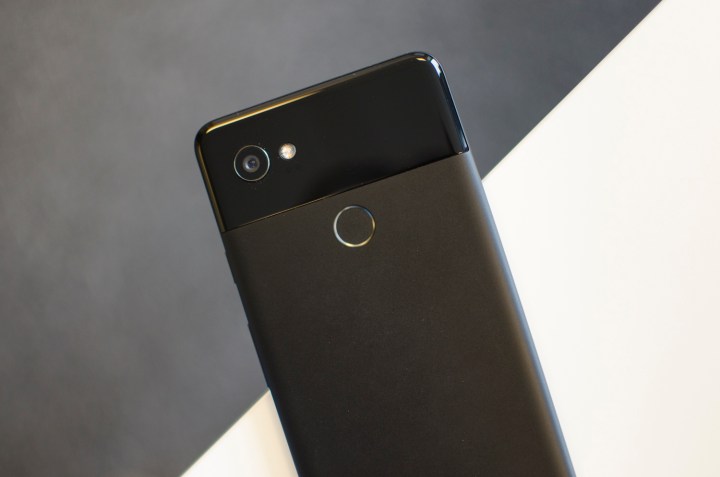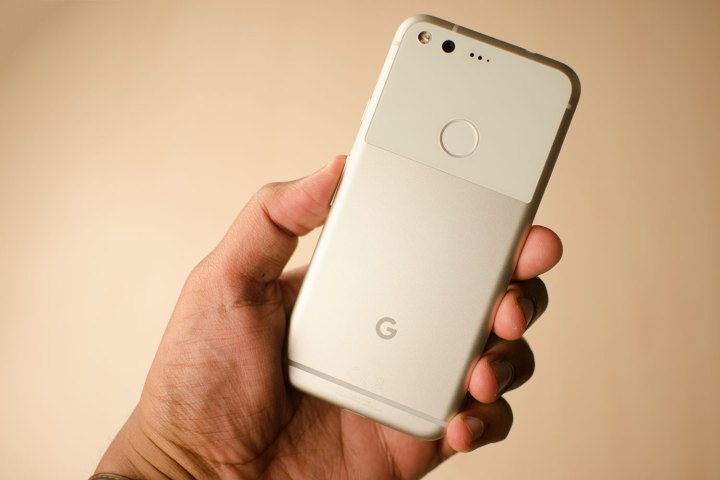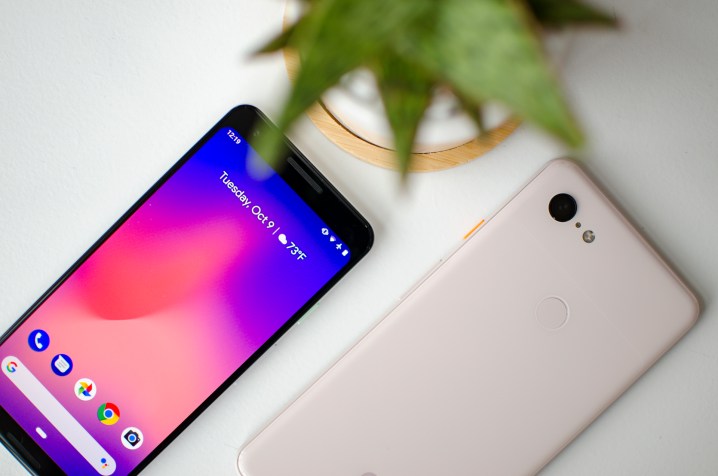
As the developer of Android, Google turns out the slickest Android phones. Snag a Pixel and you don’t have to worry about Android security or fragmentation — you can simply enjoy a silky smooth, swiftly updated slice of Android heaven.
The original Pixel is getting on a bit and the Pixel 3 offers some upgrades over the still-excellent Pixel 2. If you’re thinking of upgrading, or wondering if last year’s Pixel might be good enough, then we have you covered right here. Learn exactly what separates the three Pixel generations as we compare them.
Specs
| Google Pixel 3 |
Google Pixel 2 | Google Pixel | |
| Size | 145.6 x 68.2 x 7.9 mm (5.73 x 2.69 x 0.31 inches) | 145.7 x 69.7 x 7.8 mm (5.74 x 2.74 x 0.31 inches) | 143.8 x 69.5 x 8.5 mm (5.66 x 2.74 x 0.33 inches) |
| Weight | 148 grams (5.22 ounces) | 143 grams (5.04 ounces) | 143 grams (5.04 ounces) |
| Screen size | 5.5-inch AMOLED | 5-inch AMOLED | 5-inch AMOLED |
| Screen resolution | 2,160 x 1,080 pixels (443 pixels per inch) | 1,920 x 1,080 pixels (441 pixels per inch) | 1,920 x 1,080 pixels (441 pixels per inch) |
| Operating system | Android 9.0 Pie | Android 8.0 Oreo (upgradeable to Android 9 Pie) | Android 7.1 Nougat (upgradeable to Android 9 Pie) |
| Storage space | 64GB, 128GB | 64GB, 128GB | 32GB, 128GB |
| MicroSD card slot | No | No | No |
| Tap-to-pay services | Google Pay | Google Pay | Google Pay |
| Processor | Qualcomm Snapdragon 845 | Qualcomm Snapdragon 835 | Qualcomm Snapdragon 821 |
| RAM | 4GB | 4GB | 4GB |
| Camera | Single 12.2MP rear, dual 8MP and 8MP front camera | Single 12.2MP rear, 8MP front camera | Single 2.3MP rear, 8MP front camera |
| Video | 4K at 30fps, 1080p at 120fps, 720p at 240fps | 4K at 30fps, 1080p at 120fps, 720p at 240fps | 4K at 30fps, 1080p at 120fps, 720p at 240fps |
| Bluetooth version | Bluetooth 5.0 | Bluetooth 5.0 | Bluetooth 4.2 |
| Ports | USB-C 3.1 Gen 1 | USB-C 1.0 | USB-C 1.0, 3.5mm audio jack |
| Fingerprint sensor | Yes (back) | Yes (back) | Yes (back) |
| Water resistance | IP68 | IP67 | Splash resistant |
| Battery | 2,915mAh
Fast charging Qi wireless charging |
2,700mAh
Fast charging |
2,770mAh
Fast charging |
| App marketplace | Google Play Store | Google Play Store | Google Play Store |
| Network support | T-Mobile, AT&T, Verizon, Sprint | T-Mobile, AT&T, Verizon, Sprint | T-Mobile, AT&T, Verizon, Sprint |
| Colors | Just Black, Clearly White, Not Pink | Kinda Blue, Just Black, Clearly White | Quite Black, Very Silver, Really Blue |
| Price | $800 | $650 | $650 |
| Buy from | Amazon |
||
| Review score | 4.5 out of 5 stars | 4 out of 5 stars | 4.5 out of 5 stars |
Performance, battery life, and charging
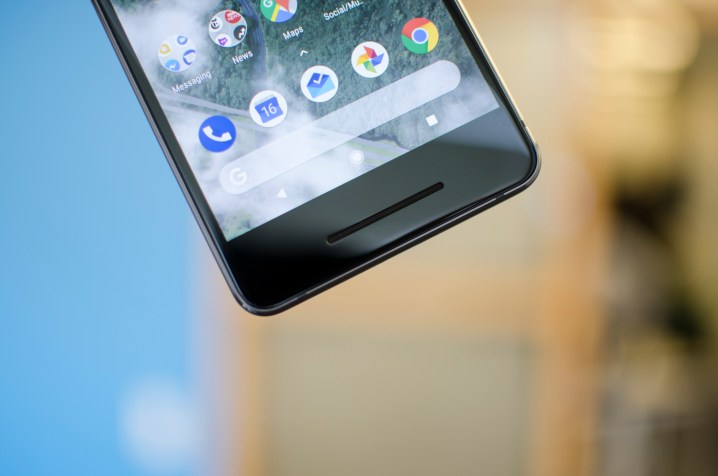
A look at the spec sheet reveals the Pixel 3 has the popular Qualcomm Snapdragon 845 processor inside — the same chip you’ll find in everything from Samsung’s Galaxy Note 9 to Sony’s Xperia XZ3. It’s fast and plenty powerful. The Pixel 2 has last year’s Snapdragon 835 and the original Pixel has the Snapdragon 821. Each new generation of Qualcomm’s processor brings speed boosts and power efficiency enhancements. The Pixels all have 4GB of RAM.
There’s 64GB or 128GB of storage in the Pixel 2 and Pixel 3, and you can also get a 128GB Pixel. The original, entry-level Pixel offered just 32GB of storage, which is definitely not enough, especially since there’s no MicroSD card slot in any of these phones.
Battery size hasn’t changed much, going from 2,770mAh in the original to 2,700mAh in the Pixel 2 to 2,915mAh in the Pixel 3. Although it has a slightly larger screen to power, it also boasts better power efficiency. Sadly, these are all phones that will require daily charging, but the Pixel 3 is the only one to offer support for Qi wireless charging.
Winner: Google Pixel 3
Design and durability
- 1. Google Pixel 3 XL
Google’s understated style could also be described as dated. It has been slow to react to the bezel-less trend, with each Pixel release featuring unashamedly large bezels around the screen compared to contemporaries. The Pixel 3 is certainly the most modern-looking of the trio. While the back of the Pixel 2 had a two-tone finish that combines matte aluminum with a glass portion at the top, the Pixel 3 is all glass. In the original Pixel, the glass took up perhaps a third of the back with the fingerprint sensor embedded in it, but in the Pixel 2, that glass portion shrank and the fingerprint sensor was found in the metal below. The Pixel 3 retains a similar style, but the back is all glass now. Only the original Pixel had a 3.5mm headphone jack, the newer Pixels rely on a single USB-C port instead.
The original Pixel was only splash-resistant, but the Pixel 2 and Pixel 3 can be fully submerged in water without sustaining any damage. The relatively small size makes each Pixel easy to handle, and the original Pixel and the Pixel 2 should cope with falls better than their more delicate successor. The Pixel 2 and 3 both boast Gorilla Glass 5, while the original Pixel has Gorilla Glass 4.
Winner: Google Pixel 3
Display

All three of the Pixels boast OLED screens, but while the Pixel 2 and original Pixel have 5-inch displays with 1,920 x 1,080-pixel resolutions, the Pixel 3 has a bigger, 5.5-inch display with a resolution of 2,160 x 1,080 pixels. The shift to a 19:9 aspect ratio, from 16:9 in the first two Pixels, gives you a decent extra chunk of screen real estate without increasing the size of the handset — in fact, the Pixel 3 is slightly smaller.
Winner: Google Pixel 3
Camera

The Pixel 2 has been our reigning camera phone champion for the last year. Despite relying on a single 12.2-megapixel lens, it takes consistently excellent shots in all kinds of different conditions — and it appears Google has stuck with it for the Pixel 3. The original Pixel was no slouch either, with a 12.3 megapixel camera. The Pixel 3 offers a range of new and exclusive A.I. smarts in the camera that enable it to snap shots before and after you press the shutter button, so it can choose the best one, where your subject is facing the camera, smiling, and has their eyes open. There’s also an A.I.-enhanced zoom capability, automatic subject tracking, so you don’t have to tap to refocus if you or your subject move, and improved low-light performance.
The first two Pixels have 8-megapixel front-facing cameras, but the Pixel 3 kicks it up a notch with a dual-lens, front-facing camera that pairs two 8-megapixel lenses, one telephoto and one wide angle. That enables you to get a solid bokeh effect, with blurred backgrounds on your portrait photos. The second lens is wide angle, allowing for wider group selfie shots, or enabling you to capture more of your background.
Winner: Google Pixel 3
Software and updates
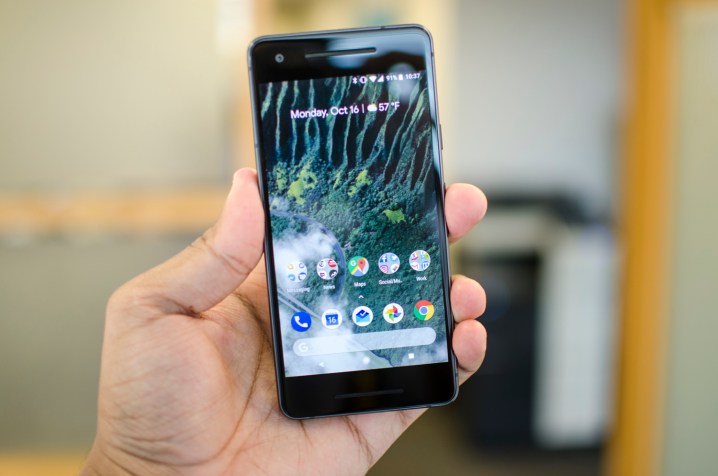
Google’s Pixel phones are mercifully free of manufacturer meddling, with the purest stock Android, which enables some of the best performance you’ll see on an Android phone. They’re also the first devices to get software updates, as Google can roll them out whenever it likes. We’re giving the Pixel 3 the win here because it will continue to be updated for longer than the other two, but the software experience on these phones is close to identical, with Android 9.0 Pie on all of them.
Some of the new Google Assistant capabilities, like the ability to screen your calls to weed out spam and the ability to make calls and makes restaurant reservations for you, will be rolling out on the new Pixels first.
Winner: Google Pixel 3
Special features

Google has something of a no-frills approach to its smartphones, preferring to focus on a slick, well-rounded experience. While there are no glaring flaws here, there also isn’t much to point to in terms of special features. The Pixel 3 sets itself apart from the other two with its dual-lens selfie-camera and the A.I. enhancements in the main shooter.
The Pixel 3 is also the only one with Qi wireless charging support, and if you charge it using a Google Pixel Stand, you get access to schedule and commute information and more via one-touch shortcuts or voice commands.
Winner: Google Pixel 3
Price
The first two Pixel phones cost $650 at launch for the lowest-capacity model, but the original Pixel can be found for significantly less now and we expect to see price drops on the Pixel 2, now that the Pixel 3 is here. The Pixel 3 costs significantly more at $800 for the 64GB version and $900 for the 128GB version.
Stock issues impacted the original Pixel and the Pixel 2 as Google seemed to be caught off guard by the demand, but we don’t expect to see a repeat with the Pixel 3. Google has offered each Pixel unlocked and ready for use on any major U.S. carrier, and you can buy the Pixel 3 on an installment plan if you prefer.
Overall winner: Google Pixel 3
It’s somewhat surprising to see how little the Pixel has changed in three generations. The Pixel 3 is definitely the best of the bunch, but we’re talking about refinements here, with a slightly more modern design that squeezes in more screen and a better front-facing camera. It’s also faster and has a little more stamina than its predecessors, but there are no giant leaps. If your budget is limited and you can snag a discounted Pixel 2, we think it will serve you well for some time to come. If you’re looking to upgrade, we think you’ll feel the difference if you’re trading in an original Pixel, but Pixel 2 owners can stick with that model for another year.

